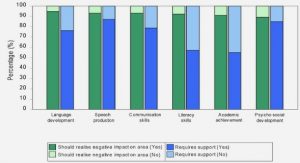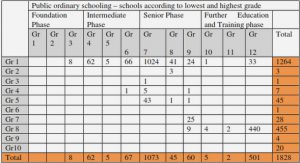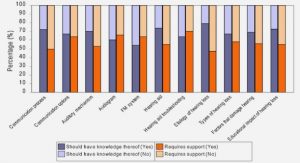Get Complete Project Material File(s) Now! »
Method
Research strategy
Research is referred to as the process that involves collection and interpretation of the data in a systematic way and simultaneously having a clear objective for the research, by this means expanding the researcher´s knowledge (Saunders, Lewis and Thornhill, 2007). Research strategies that have been identified by researchers and academics are experiments, surveys, case studies, action researches, grounded theory, ethnography and archival research. Saunders et al. (2007) highlight that there is no certain research strat-egy that is superior or inferior to any other.
Saunders et al. (2007) defines archival research as a research where administrative rec-ords and documents are utilized as the primary source of data, which is an outcome of daily activities. Administrative records and documents are referred to as both historical and recent document, such annual financial reports. This study involves investigation of the banking sector in the EU context, which generates answer to whether the transpar-ency of the disclosed bonus plans and its performance targets can be justified and veri-fied by a third party. Such disclosed information may only be obtainable through com-panies’ financial reports and/or corporate governance reports addressed to the public and are therefore the primary sources of current study. These different reports related to remuneration arrangements, and specifically annual bonus plans, are analyzed in order to answer the research question and achieve the aim of this stud
Research approach
Research approach is considered as significant part of the research process and is re-ferred as explanation and justification of the techniques and procedures that are used to obtain and analyze data. What type and number of techniques and procedures that are used during the process depend upon the research purpose (Saunders et al., 2007).
There are two research methods that are employed in different academic disciplines, ei-ther separately or combined when collecting the data for the research, namely qualita-tive and/or quantitative research method. Qualitative research method refers to data that are not numerical in nature but have rather meaningful exploration of the phenomenon being studied through words (Saunders et al., 2007). The reason why qualitative method has been preferred instead of quantitative one is because it is more suitable for the re-search question and the purpose of the study. This research explores the issue of disclo-sure and transparency of annual bonus plans, which comprises mainly of descriptive da-ta. The aim of this approach is to get an in-depth understanding of the topic particularly in largest EU banks. The descriptive information comprises of the remuneration ar-rangements, such as annual bonus plan, which mostly takes the form of words and fig-ures rather than numbers.
Qualitative research method is usually classified as either inductive (or “building theo-ry”) or deductive (or “testing theory”). Deductive approach is applicable for current study and it means that appropriate theoretical framework is tested against the analyzed data (Saunders et al., 2007). The theoretical frameworks that is valid for this study is the managerial power theory. The theory addresses the agency problem between the man-agers and shareholders through executive remuneration arrangements. The advocates of the managerial power, Bebchuck and Fried (2004), argues that there is a correlation be-tween CEO power and pay, meaning that the excessive power that CEO possess might lead to inadequate pay arrangements
Data collection
Data collection is referred to the sources that are used in the study. There are mainly two forms of data collections, primary and secondary data. Primary data is data that has been observed, experienced or recorded directly from immediate experience and that has not been analyzed. Secondary data, on the other hand, is gathered data established by a third party (Walliman, 2010). Saunders et al. (2007) claim that secondary data is not always intentionally published for the research subject. Journals, newspapers, policy documents, annual reports and all other type of data that already exist are some example of secondary data The documents and information that are gathered for the current study are merely based on secondary data. The secondary data that are used in this study is generated specifical-ly from remuneration reports of companies, which have been downloaded from their official websites. Also, official documents in form of recommendations and guidelines re-garding executive remuneration issued in the EU-levels, national specific corporate governance codes and other documents associated to the research issue.
In order to ease the comparison between the twenty different banks, all financial data that are conducted in this study retrieved from each bank´s annual reports have been converted into common currency of euro [EUR]1. Converse currency is based on ex-change rate of the last day of the 2011 calendar year. Moreover, the study will be orga-nized by the level of transparency by dividing the banking companies into two main groups, specifically banking companies with high transparency respective banking companies with low transparency. The aim of this structure is to simplify comparison of all companies due to the nature of the sample
Sample description
A total of twenty banking companies are included in the sample for the purpose of this thesis. The selected banks are based on the list of “Large EU banks” issued by the High-Level Expert Group and comprises originally of 29 leading banks, both listed and pri-vate companies, where the firm size is measured by total assets. However, nine of the banks of the original list are excluded from the sample of evident reasons. The sample for current study only deals with companies that are listed on the stock exchange mean-ing that companies´ financial reports and accounts are expected to be publicly accessi-ble. Since this study takes an objective approach from shareholders viewpoint, it is pre-sumed to only analyze publicly listed companies. Therefore, five private banks were ex-cluded. Additional three Swedish-based banks were removed from the study since the top managers are not eligible to annual bonus schemes and one Italian-based bank were ruled out since the company only disclosed information regarding corporate governance and remuneration in Italian. Therefore, twenty selected banks that are included in the study are publicly listed and CEOs of the chosen banks are entitled to their annual bo-nuses2.
The first nine banks each have the total assets worth more than €1 trillion, with Deutsche Bank being the largest bank exceeding € 2 trillion mark in total assets. The bank with the lowest amount of assets is UBI Banca, with approximately € 129 million (High-level Expert Group, 2012).
Furthermore, thirteen of the selected banks are considered Global Systematically Im-portant Banks [G-SIBs], according to the Financial Stability Board and the Basel Com-mittee on Banking Supervision. G-SIB consists of specific financial institutions whose distress or disorderly failure, due to the size, complexity and systematic interconnected-ness of the institutions, which have the tendency to induce major disruption to the wider financial system and economic activity. These G-SIB banks are denoted with an asterisk (*) in the above figure (High-level Expert Group, 2012).
Most banks are from the United Kingdom, representing five banks of the total sample, followed by banks coming from France, Italy, Germany, Spain, Austria, Belgium, Denmark, Netherland and Sweden, which is a total of ten different countries.
The idea behind the current research is inspired by already existing study issued by Fat-torusso et al. (2007). Their study reviewed UK listed companies’ annual bonus plans and evaluated whether the disclosed information of annual bonuses plan where trans-parent or not. The authors used a quantitative research approach for their study and de-ployed, amongst others, three specific annual bonus plan features (see bonus features C [1], [2] and [4]), which become useful for this study of disclosure of CEO bonus plan. Despite the already existing bonus plans attributes taken from their study, two addition-al aspects were developed due to recent rules and recommendations stipulated on the EU-level which also became applicable to this study as part of bonus plan features (see C [3] and C [5]). According to the Recommendation 2009, listed companies should ex-plain in their remuneration arrangements the methods of annual bonus plan applied in order to ease the determination of whether performance criteria have been achieved (Eu-ropean Commission, 2009a). Furthermore, the Directive 2010/76/EU applicable to fi-nancial intuitions states that variable components, as part of the remuneration arrange-ments, should be capped (European Parliament and the Council, 2010). In addition, by disclosing the bonus cap, it may ease for the shareholder to evaluate performance targets and thereby determine the bonus granted to the CEO which is linked to the predeter-mined performance measures. These abovementioned guidelines, which are only ap-plied and disclosed by some of the banks, equally became crucial aspects in terms of transparency of bonus schemes.
As a result, the level of transparency of CEO annual bonuses plans are examined and measured in relation to five transparent bonus plan criteria (C):
- The application of simple targets through a single performance condition,
- The application of published targets accessible to shareholders
- The disclosure of methods applied in order for shareholders to determine wheth-er the given performance target(s) has been fulfilled.
- Bonus payments in form of cash.
- The disclosure of annual bonus cap
These bonus criteria refers to as preferable criteria from the shareholders perspective, which simply means that the fulfillment of these criteria would indicate that companies strive to act in the best interest of their shareholders and the company as a whole (Fat-torusso et al., 2007). In this study, the sampled banks are divided into two main catego-ries; namely banking companies with high transparency respective banking companies with low transparency, depending on their level of transparency. Banks that are catego-rized as high transparent have fulfilled at least three abovementioned bonus criteria. In contrast, banks that are categorized as low transparent have fulfilled two or less bonus criteria
Validity and reliability
As part of the research process, authors have to consider the validity and reliability of the data that they intent to use. It is a question of ensuring credibility and trustworthi-ness of the research findings. The validity and reliability of the research findings de-pends on the methodology applied (Saunders et al., 2007). According to Saunders et al. (2007), validity is associated with the question of whether the research findings are as-sociated with the purpose of the research. Reliability, on the other hand, is concerned of whether the applied techniques and procedures of data collection will produce con-sistent findings. This means that the same findings should be gained if another research-er uses the same procedure and techniques.
The data that has been collected and obtained for this study is consistent with the re-search purpose and the research questions and thus measure up to what is considered as high validity. In order to achieve the purpose and answer the research questions, secondary data is utilized in form of bank´s annual reports, since it contain information that is valuable and convenient for this study. The companies have the obligation to prepare true information about the financial statements and accounts in their reports accessible to the public in order to consider them as trustworthy and reliable in the public eye. The subjectivity may be existent since the interpretation and examination of the collected da-ta from the companies’ published reports are done by the individuals and through a sys-tem of bonus criteria which serves as the basis of this study. In this case, the annual re-ports of these large companies are estimated to be reliable due to the fact that they are revised and audited before it is published. Official documents such as national corporate governance code and other recommendations and regulations related to the matter are also considered as reliable since they ensure a high standard of best practice for the cor-poration, when they are conducted according to the available corporate governance codes and other related recommendations and regulations. Additionally, there is always a risk of for errors, such leaving out sufficient data, in terms of collecting comprehen-sive information from financial statements and evaluating whether the banking compa-nies have succeeded to meet the required criteria. This may be the case in low transpar-ent banks where applicable information is more problematic to find due to the lack of disclosed information. To minimize the risk and thereby enhance the reliability, the in-formation in the financial statements and in current study have been constantly reviewed and rechecked in order to ensure that the collected data is accurate and consistent with the original source. Thus, the data in this study is considered as reliable with fairly low subjectivity
Abbreviations
1 Introduction
1.1 Background
1.2 Problem
1.3 Purpose
1.4 Delimitations
1.5 Outline of the thesis
2 Frame of Reference .
2.1 Executive remuneration components
2.2 Executive annual bonus plan
2.3 Principles on disclosure and transparency
2.4 Managerial power theory
3 Method
3.1 Research strategy
3.2 Research approach
3.3 Data collection
3.4 Sample description
3.5 Validity and reliability
4 Empirical Findings
4.1 Disclosure of annual bonus plans
5 Comparative Analysis
5.1 Disclosure of annual bonus plans
5.2 Banking companies with high transparency
5.3 Banking companies with low transparency
6 Conclusion
7 Discussion
List of references
GET THE COMPLETE PROJECT






